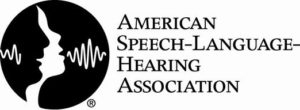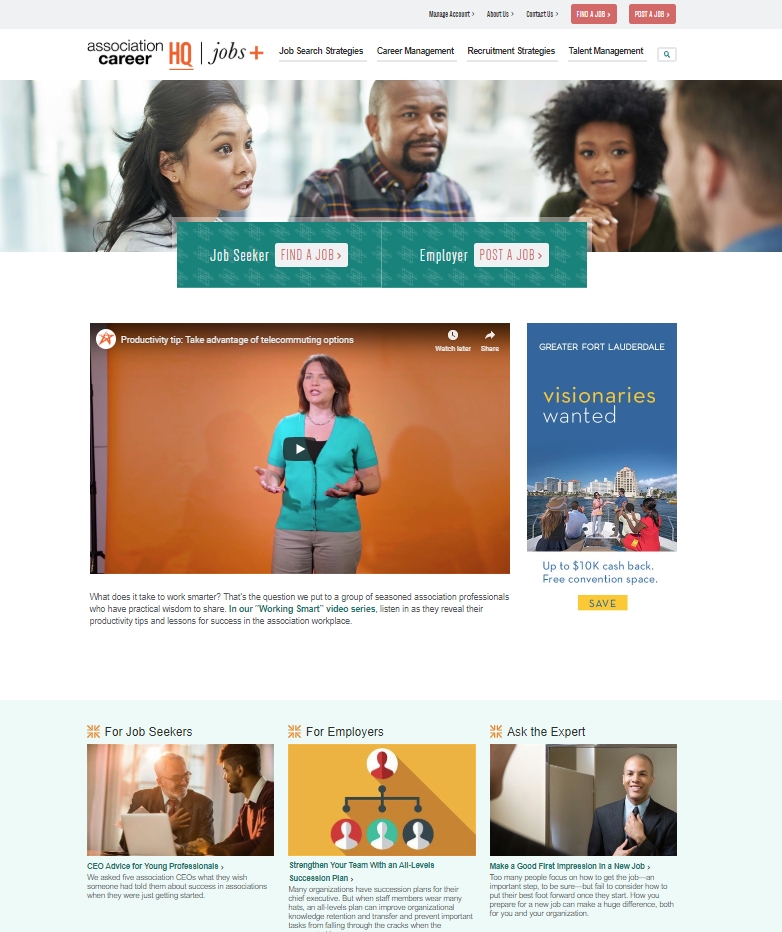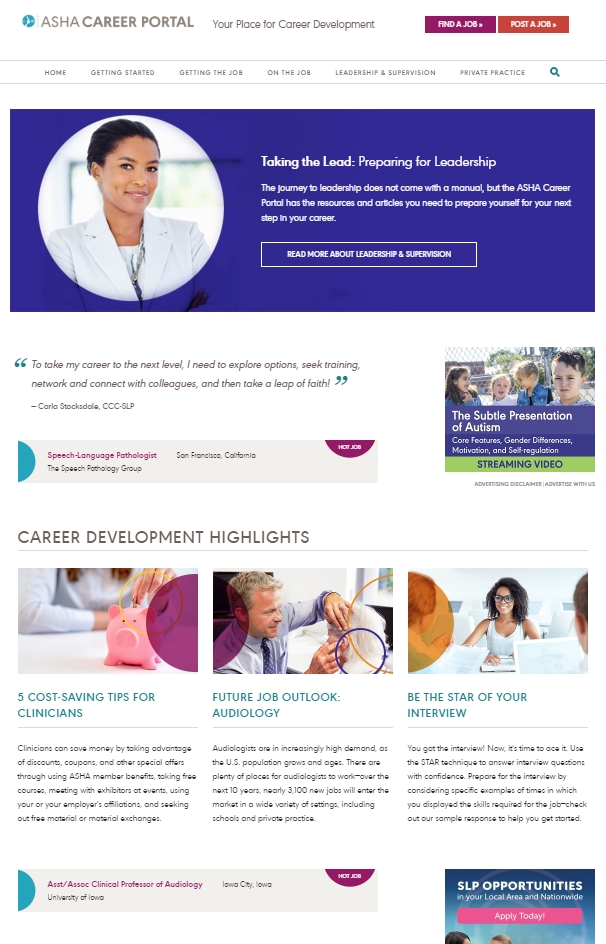How to Start or Grow Your Online Career Center
Starting or growing a career management site doesn’t have to be intimidating.
If associations are the primary resource for industry professionals to develop their skills in their chosen profession, then it’s only logical that the association should be the first place they think of for career management and new opportunities. However, many associations are hesitant to commit the needed resources and staff time to begin or enhance an online career center because doing so always seems to be a large undertaking.
 The good news – starting or enhancing a career center doesn’t have to be an intimidating task. As Jennifer Baker, CAE, director of Association CareerHQ, the career center of ASAE: The Center for Association Leadership notes, while the ins and outs of the career center business may be new, association professionals can apply the same project management skills they use in their governance, membership, and meetings work to ensure the endeavor goes smoothly.
The good news – starting or enhancing a career center doesn’t have to be an intimidating task. As Jennifer Baker, CAE, director of Association CareerHQ, the career center of ASAE: The Center for Association Leadership notes, while the ins and outs of the career center business may be new, association professionals can apply the same project management skills they use in their governance, membership, and meetings work to ensure the endeavor goes smoothly.
So, how do you start the task of creating a first-class career center? Here are six helpful tips and tactics.
-
Start by setting your course
As a first step, identify your goals, said Baker. Will the career center be positioned as a members-only benefit or will it be open to members and nonmembers alike? Is driving non-dues revenue an essential function? Are you seeking to address a specific career or talent management need within the profession or trade your organization represents? Placing the career center into the context of your organization’s strategic plan, and having clear goals and related metrics will lay a firm foundation for success. Setting goals will also ensure that staff time and other investments are properly directed.
-
Secure a champion and staff lead
As a part of the planning process, Baker recommends securing an executive-level champion for the career center and making sure there is someone on staff who has the responsibility and authority to execute the plan. All too often association career centers are siloed within the organization, hampering the potential ROI.
The reality is that career management touches nearly every area of an association’s operations. Career-minded individuals are thinking of the benefit to their career track when considering whether or not to become a member of an association. They factor in their short- or long-term career goals when deciding which professional development events to attend. They often become involved in advocacy efforts (or not) based on how it may help them grow professionally and achieve their career aspirations.
The content (inclusive of articles, tips, tools, and other resources) you need to maximize your career center’s success will be found across the organization. This is why executive-level support for the career center is so helpful. When combined with a clear staff lead who can facilitate cross-departmental information gathering and collaboration, you can effectively and efficiently move your career center evolution forward.
-
Engage other departments
The staff lead plays a big role here. “This person can explain the contribution opportunities to their colleagues and get them excited about the project,” Baker said, “as well as build the internal support necessary to ensure the career center’s sustainability.”

The experience of the American Speech-Language-Hearing Association (ASHA) provides a great case study of the use of smart staff engagement processes and decision-making. With the help of their Office of Business Excellence, an internal team of project and process improvement managers, ASHA formed a large project team that represented membership, governance, professional practices, sales, publications, and anyone else who had content related to career development. The team talked through how they could each develop content and contribute the right mix of links to the forthcoming “career portal” so that everyone’s efforts wouldn’t duplicate or cannibalize what others produced.
When building a cross-departmental team, engage the managers of those team members to help insure the people working on the career center won’t be pulled off the project midway because of their department’s needs. Even if ‘manager involvement’ simply consists of regularly informing managers about the progress of the career center project via emailed updates or a standing meeting agenda item, the additional buy-in created by showing managers the forthcoming value of the career center can help preserve the integrity of the team through project completion.
Consider investing in a new position or team to manage your growing career center. “We had to restructure our team to support our new content goals,” said Gwen Fortune-Blakely, director, enterprise-wide marketing at ASHA. “We created a director of career management (Redmond) to be in charge of the portal, as well as hired a full-time sales manager, Eli McLean, ASHA’s associate director, to revamp our job posting pricing structure to better serve our career vendors recruitment advertising sales. It has been worth the investment in terms of ASHA’s goal of delivering member value by helping members manage their careers.”
-
Conduct a career content audit
“You’d be surprised at how much career content your association likely already has,” said Baker. “Conducting a content audit will help you identify all the resources you already have that you can use ‘as-is’ or repurpose or refresh,” she continued.
That was true for ASHA , whose job board wasn’t generating as much interest among members or employers as it should given the size of the organization. ASHA is a professional, scientific, and credentialing association with 198,000 members, but only a small fraction of those members were using the association’s robust career development resources.
“ASHA has a wealth of content from several departments that could be repurposed for our career center to help members in all stages of their careers, but that content was scattered around our website and within our internal departments, so it wasn’t as accessible as it needed to be,” said Alexis Redmond, director, career management resources for ASHA.
Finding and organizing content for a career center doesn’t necessarily mean piping in new content all the time. Often all that’s required is being smart about the career content you already have. Because career tracks and the skills needed within most industries change over the long term and not over a period of weeks or months, your staff can take articles, webinars, or materials from the past few years and repurpose them into evergreen whitepapers, manuals, podcasts, and other resources to populate your career center.
“Instead of linking to an article with a date on it, take out the date, make sure it’s still relevant to today’s needed workplace skills, and you have evergreen content,” Baker noted.
ASAE had a small group of people — two or three in several different departments — who helped comb through the organization’s website and collect all the pages and the posted materials having to do with career management. Once all ASAE-owned career-related materials were earmarked, a small task force began organizing it so that ASAE’s career offerings would be presented in a logical, organized manner on Association CareerHQ.

Remember to also examine external career sites. ASHA worked with a service that scrapes data from multiple job boards to collect data about hiring trends and career development needs. “This service gave us an incredibly detailed sense of the overall job searching landscape for audiologists and speech-language pathologists,” said Redmond. “We could more easily see which companies are posting what types of jobs, where, and with what frequency, which we used for future job posting sales leads. We could also see what skills employers were looking for, which helped us plan future content for our career center,” she continued.
Wondering if your existing career management materials and programming are enough? If strategic planning or an annual member survey is already in the works at your association, add a few questions that ask for feedback about career development and management resources desired. Listen to what your members are saying about your association’s career resources at events and online. This will help ensure that future initiatives your association begins or builds upon include career planning, skills development, resume writing, or any other career-related areas your members want to see.
-
Plan for future career center content
Cross-department collaboration can also help your career-dedicated staff keep career center content fresh. “Month by month, put a plan in place to identify which streams of content need refreshing and which items can be repurposed,” Baker said. “Ask for help from those other departments well in advance of when you need it. Consider asking for or hiring outside help as well. ASAE hired a blogger because our content team can’t write everything on their own. Outsourcing content helps our small staff keep things fresh.”
Don’t feel like your association must have a grand library of resources before you can debut a career center, or that you must produce content as frequently as you see other, larger associations or organizations churning out resources. “A career site that has limited, but high-quality, information can still be of value to members,” Baker said. Plus, thoughtfully growing a career center within the time- and knowledge-based parameters your staff can handle will always result in a better site.
ASHA worked with their User Experience team to create profiles that represent different types of member categories and their career-related challenges. Creating these personas helps ASHA keep individual members in mind when thinking about how the association can provide content that addresses their career development needs while allowing their staff to see what the trajectory of career portal growth might look like a few years into the future. Having a large, diverse membership in terms of work setting, age and interests means it would be easy to fall into content disorganization without having some structure, Redmond noted.
“We try to come at content planning from a holistic view so that our members can always, easily find the career info they want,” she said.

-
Ready, set, launch
After 14 months of planning, ASHA re-launched their refreshed career portal on Sept. 13, 2018 and within three months saw a 54 percent uptick in total users and a 71 percent lift in new users. “12,000 of our career portal users were new to the site during that time,” Fortune-Blakely recalled. “A typical new cohort of ASHA members numbers five to 8,000 in a year, so we captured a whole new generation of potential ASHA members on our career portal in just three months.”
ASHA experienced success on the employer/recruiter side as well. The Asset Sales team, run by Barbara Lecker, CAE, director, assets and corporate alliances, partnered with employers through a featured employer program and launch packages run by ASHA. Employers could align with the site launch by providing special sponsored content, such as interview tips, with the goal of drawing portal visitors to their site to explore employment opportunities.
Any association that prioritizes the regular maintenance of their online career center internally, updates it with original and repurposed content, and promotes it to their industry at large, will see positive returns on their investment, too. The most successful career centers are those the executive staff supports by giving it the attention needed to make it a robust tool.
Bonus: Going forward – monitor career center performance
Association career centers are part of the talent acquisition ecosystem which includes big players making big investments in the space, including Microsoft with its 2016 acquisition of LinkedIn, Google which launched Google for Jobs in the summer of 2017, and Recruit Holdings which has acquired Indeed and Glassdoor.
“These companies have a foundation of brand awareness, large marketing budgets and related technologies such as marketing automation and AI, all of which is allowing them to impact both employers’ and job seekers’ expectations of career centers. There are other smaller for-profit competitors as well, which is why it’s so important to pay attention to the competitive landscape,” said Baker.
She recommends doing a competitive analysis every six to 12 months. It’s not a hard process, but definitely necessary to spur improvements to an online career center.
You need to also know your numbers and how they are trending – from the number of site visitors, to the number of applicants delivered per job posting. Your job board platform will be your go-to source for much of this data.
There are also tools you can tap into to help you increase the reach of your online career center. ASHA uses Recruitics and Google Ads to gain insights into the search engine optimization (SEO) strategies it needs to continually deploy to remain within the top three search results on Google and reach members wherever they may be job searching. Their reason for doing this is so that their career portal isn’t buried in search results or overshadowed by larger, more commercial job boards.
Associations are the original career management resources, and thus have a leg up when it comes to knowing what industry professionals and employers need. Whether you are a small or large staff organization or somewhere in between, you can capitalize on this advantage. All it takes is some thoughtful, strategic planning and curation of resources and you can serve up career management essentials for the professional or trade you serve and create a powerful reason for members and prospects to invest their time and treasure with your organization.

